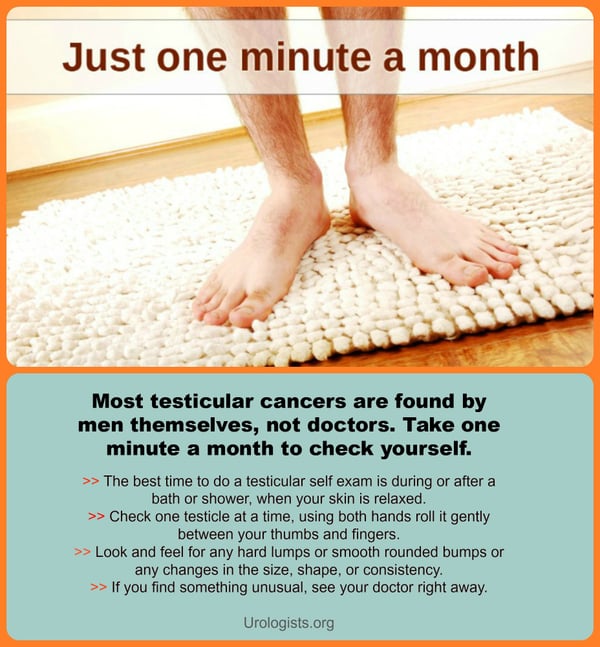While not as festive as many annual celebrations, Testicular Cancer Awareness Month is just as important. In fact, it could save your life.
Testicular cancer is a relatively rare disease. Only about one in 270 men will ever develop testicular cancer, according to the American Cancer Society. The organization expects about 8,820 new cases to be diagnosed in the US in 2014. Of those, approximately 380 men will die.
The good news is, testicular cancer is very treatable. So take the time for regular doctor exams and self-exams, just in case. Both involve visual and tactile inspection of your testicles.
How To Do a Testicular Self-Exam
In between doctor visits, you should take matters into your own hands. Since a lump on the testicle is the most common first sign of testicular cancer, doing a regular self-exam increases the likelihood of finding cancer at an early stage. This is especially important if you have any of the risk factors listed below.
Before you start your self-exam, remember that a certain amount of bumpiness and a slight size disparity are normal. Blood vessels, sperm-carrying tubes and supporting tissues can all feel a bit lumpy.
- Examine your testicles after bathing, when your scrotum skin is relaxed.
- Starting with testicle number one, gently roll it between your fingers. Feel for lumps, bumps and changes in the shape and size of your testicles.
- Do the same for testicle number two.
- Visual inspection is important, too. If it’s hard to see down there, use a small handheld mirror.
If you find anything suspicious, stay calm. Lumps in your testicles could be something other than testicular cancer. But call your doctor immediately to stay on the safe side.
Symptoms of Testicular Cancer
Of course, it always helps to know what you’re looking for. Remember that these symptoms could also indicate other conditions. So if you develop any of these, head for your doctor to get checked out professionally. Sooner is better than later.
Common symptoms include:
- Painless bump or lump on your testicle
- Swollen testicle
- Groin pain
- Aching abdomen, nausea or vomiting
- Soreness in the breasts, or breast growth
- In boys, puberty coming early
Risk Factors for Testicular Cancer
Most men who develop testicular cancer don’t have any known risk factors. But a few things can slightly drive up your risk. These include:
- One or two undescended testicles
- Family history of testicular cancer
- Already having had testicular cancer in one testicle
- Being white, which makes you at least four times as likely as a black man and three times as likely as an Asian man to develop this type of cancer
- Lifestyle choices, such as smoking
Manning Up
According to Orchid, a UK organization that focuses on male-specific cancers, single men are less likely to recognize testicular problems than married men. Also, men in “macho” fields, such as manual workers, are more likely to ignore possible symptoms of testicular cancer. But it’s time for males to man up, examine their testicles and seek medical attention if necessary. Worrying you have cancer is scary. Ignoring the signs is foolhardy. Remember, testicular cancer has a high treatment success rate. Between 95 and 98 percent of men diagnosed with testicular cancer are cured.
Feel something unusual? Find a doctor near you.



